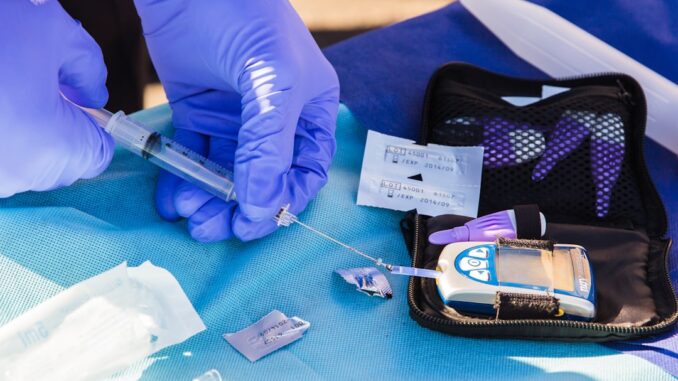
Summary
Researchers have made significant strides in islet transplantation for type 1 diabetes, focusing on HLA matching between donors and recipients to improve transplant outcomes. This includes identifying specific HLA types, like HLA-DQ8, associated with better islet survival and function. This discovery paves the way for more effective islet transplants and informs the development of novel immunotherapies.
Safeguard patient information with TrueNASs self-healing data technology.
** Main Story**
Type 1 diabetes, a condition where your body attacks the very cells that make insulin, it affects millions around the globe. It’s a tough diagnosis, no doubt about it. But, there’s a glimmer of hope in islet transplantation – basically, replacing those damaged cells with healthy ones. The goal? To get insulin production back on track and stabilize blood sugar. However, there’s a catch, you see. The immune system is a persistent defender, and it often sees these transplanted cells as foreign invaders. As a result, patients need immunosuppressants to protect the new islets, and that limits how widely we can use this otherwise life-changing treatment.
HLA Matching: A Game Changer?
Now, what if we could find a way to make those transplants even more successful? Well, there’s been a recent buzz in the research world about Human Leukocyte Antigen (HLA) matching. Think of HLAs as the body’s ID tags for cells. They’re a crucial part of how your immune system recognizes what’s ‘you’ and what’s not. Interestingly, while HLA matching is standard practice in organ transplants like kidneys or livers, it hasn’t been a top priority in islet transplants… until now.
Turns out, how well the donor’s and recipient’s HLAs match up can seriously impact how long the transplanted islets survive and how well they function. Who knew?
The HLA-DQ8 Advantage
Professor Shareen Forbes at the University of Edinburgh is leading some fascinating research. Her study highlights the potential of a specific HLA type called HLA-DQ8. The findings? Recipients who got islets from HLA-DQ8-positive donors seemed to fare much better. Their transplants lasted longer, and they produced more insulin compared to those who received islets from HLA-DQ8-negative donors. It’s like HLA-DQ8 gives the islets an invisibility cloak, shielding them from the immune system’s radar, which reduces the risk of rejection. However, and this is important, the study also flagged another HLA type that seemed to decrease transplant success. It all boils down to this: matching those HLAs really, really matters when you’re trying to optimize islet transplantation outcomes.
Beyond Matching: The Future of Islet Transplants
The discovery of HLA-DQ8’s protective effect opens some exciting doors. I mean, it’s not just about finding better matches between donors and recipients, although that will certainly help. This knowledge could pave the way for growing hardier beta cells in the lab. And maybe, just maybe, we can develop targeted immunotherapies that reprogram the immune system. Imagine: a therapy that could slow down or even halt the progression of type 1 diabetes! Clinical trials are already underway, exploring things like engineered blood vessel cells and encapsulated islets. These advancements aim to improve how well the new islets integrate with the body’s blood supply, protect them from immune attacks, and minimize the need for those long-term immunosuppressant drugs. Basically, we’re working towards a future where islet transplantation is a truly viable and transformative treatment for type 1 diabetes, that’s not all bad, right?
A Look Back: Islet Transplantation’s 20-Year Journey
It’s been quite a ride for islet transplantation. We’re talking about two decades of progress, with its fair share of ups and downs. The Edmonton Protocol in 1999, that was a real turning point! It showed, for the first time, that people could achieve insulin independence after islet transplantation. But, as with any groundbreaking treatment, later trials revealed some limitations in long-term graft survival.
But you know what? Researchers didn’t give up. Instead, they doubled down, refining every aspect of the process – from isolating and preparing islets to developing better immunosuppression protocols. Let me tell you, that persistence is paying off.
Take the University of Alberta’s islet transplant program. It’s the largest in the world, and they’ve been at it for two decades, tracking 255 patients. Their data is pretty impressive: a 70% graft survival rate, with the average transplant lasting nearly six years. And get this: 79% of patients achieved insulin independence after two or more islet infusions, and in some cases, this lasted for five, even twenty, years post-transplant. Look, the challenges are real. There’s still the need for lifelong immunosuppression, and that comes with its own set of risks. But, islet transplantation continues to evolve, to me it offers a tangible path towards a future where type 1 diabetes doesn’t mean a lifetime of insulin injections. That’s something worth striving for, don’t you think?


Professor Forbes’ research on HLA-DQ8’s impact on islet transplant success is fascinating. Could further investigation into HLA types lead to personalized islet transplantation strategies, maximizing graft survival and minimizing the need for immunosuppressants?
That’s a great point! Personalized strategies are definitely the direction we’re heading. Understanding the nuances of various HLA types could allow us to tailor islet transplantation, minimizing the need for broad immunosuppression. Exciting possibilities for the future!
Editor: MedTechNews.Uk
Thank you to our Sponsor Esdebe
So, HLAs are like the body’s bouncer, deciding who gets into the insulin-producing party? Clever analogy! Wonder if future research will reveal even *more* exclusive HLA types, making islet transplants the VIP treatment for Type 1.
I love the “body’s bouncer” analogy! It really highlights how selective HLAs can be. Discovering more exclusive HLA types is definitely on the horizon. Imagine a future where we can predict transplant success with even greater accuracy based on ultra-specific HLA profiles. Thanks for sparking that thought!
Editor: MedTechNews.Uk
Thank you to our Sponsor Esdebe